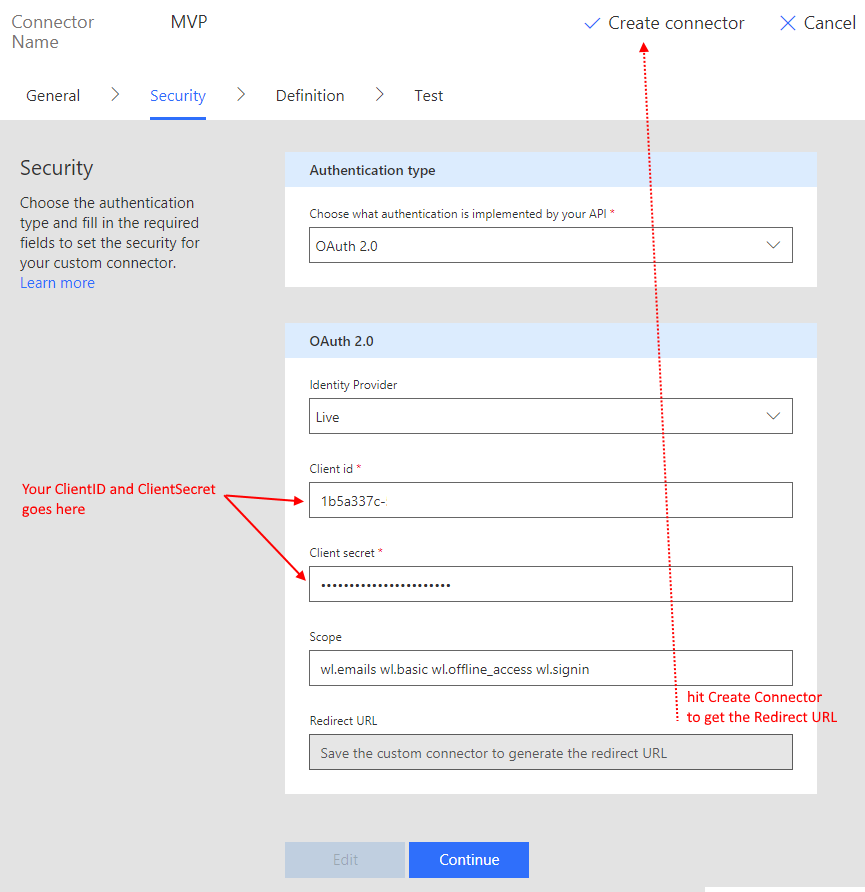My Problem (May be also Your Problem?)
I am a curious person, and I’m a community person. I explore and share what I find. As a result - I create useful content with Microsoft Flow, Power Platform, Office 365, SharePoint, JavaScript, Angular and more.
The content is created on different platforms.
Not all my users are on that one platform - so I need a way to bring the content to them.
From Blog, Twitter, LinkedIn to newsletters and YouTube channels. The simple goal is to make use of the content as much as I can - so how do we amplify that goal and bring our content to more channels, and thus, a wider reach?
Blog
I started blogging a while ago, first blogs I wrote were basically for myself. I love blogging, because blogging gives me a place to write down the complex solution we ended up with, the journey and justifications to get here, and ultimately, like every blogger could testify - we end up searching online for a solution, and arrive back on our own blogs. This is a sign of success. The past me, invested in knowledge management, for the future me. Thank you so so much, past me.
In the dawn of the Internet - owning a blog was a way everyone could express ourselves. Highly searchable, and not blocked by paywalls, registration, or even a subscription or promotion model (looking at you Medium) that required everyone to pay before you could get your content promoted, or others can get access to your content.
Microsoft's many community forums, other bloggers and Stack Overflow continues to be a direct source of incoming traffic sending new readers to your blog. In conversations, people will say John, I saw that in your blog. Sometimes years later, someone sends you an email out of nowhere - I saw something in your blog about this problem I have today, and I thought, thanks John, and I send you this email to check on how you are doing these days.
Wonderful wonderful fuzzy feelings. Blogs are the best.
My scorecard: 8
(This is a score card of realistically how much effort I should put into this content platform)
Blogging works - as the backbone of your content distribution. Keep blogging. Blog more regularly. Perhaps, even write a blog for everything you do elsewhere.
If you have not started a blog, or blogs infrequently, then blog but focus on more timeless content. Content that makes sense today in 2019 just as it did last year or 2009. And configure your blog URL and title not to show dates.
Blog syndication? I think they should have access to a summary, but ultimately, the extended value of the blog is the conversations with you. If the conversations were happening outside of your view, then they are talking about you, not with you. Try avoid that.
Twitter
I started Twitter as a way to reach more people, have that conversation - and some of the best conversations (and some of the not so great ones) were had on Twitter.
In the era of Microsoft Flow, as a low code and very visual platform - I started doing essentially micro-blogging of Flow lifehacks on Twitter - these are highly shared and easily promoted by Microsoft community managers, product accounts and even key Microsoft engineers working on that product.
My scorecard: 7
Micro-blogging is fun, but Twitter has one of the worst search experiences, and practically no guarantee of content delivery - you are at the whim of Twitter's relevant content algorithm which artificially decides what should appear or disappear on your follower's timeline.
When I crossed 100 Flow lifehacks, I decided that I need to re-invest those content into proper blog posts - some have pretty serious expressions and formulas behind them. Others needs a further introduction to why this was a problem in the first place and why this formula solves that problem.
Ultimately, Twitter remains one of the best places to meet and have conversations and see what others are sharing. Very easy to ask a question and be directed to an answer (hopefully a good answer!)
Use a automated content distribution scheduler - Buffer, Tweetdeck, or something else. Schedule retweets of your own content in an opposite timezone.
LinkedIn
I come to LinkedIn quite late in the game - there is a specific reason why - see, for the longest time I thought people visit LinkedIn when they are about to change jobs - they go and update their CV.
I've come to realize this is not the case. LinkedIn has a mini-community of its own, similar to Twitter, but in which everyone is operating on their own personal accounts and brands. That means conversations are generally more civilized, and the motive of each person in the community is apparent in the profile they present. Are they a product vendor? Are they a consultant? Are they an outsource company?
Conversations are also generally work related - so even though it feels like social banter - it’s targetted banter related to work topics. Social like Twitter, but without all the random noise related to everything “not work”.
People tend to put on a more polite face when they use that face to sell their services.
My scorecard: 7
Use an automated content distribution tool like Buffer - but make sure you engage and connect with people to extend your circle, and answer messages.
Live Coding / Live Stream
Live coding is something I REALLY wanted to do - because of the Flow lifehacks that I do are basically hour-ish quick hacks with Flow and we can see some immediate results. I always wanted to record that and turn that into a stream-able content.
I actually tried live coding / live streaming Flow lifehacks several times, each time with very few attendees.
If you do this well, I want to know!
My thoughts on this - to build a following for live streaming, you must advertise, advertise, advertise that you are going to do this at a specific time, so people can plan and join you in that time. Make it regular is good, but it must be advertised. Have a set plan of how long you will go on air, what problem you want to solve, and what outcome you want to have. This may be easy or hard, really depends on what you do.
My personal scorecard: 4
Podcasts
Podcasts are an interesting thing - see in Sydney, we have a problem. The rest of the world likes to run livestreams and community calls during our sleep time - the optimal time that these live events run is a time that covers America and Europe, this is basically between 1am and 4am Sydney time.
So many Sydney based MVPs face the same problem - we can't join product community calls, as that will destroy our next day and we'd be completely hopeless in our day jobs the day after.
And if you stay up to present at these community calls, we salute you and think you are a machine. In reality, your hair is white from lack of sleep, and you require the assistance of a barber that knows how to dye your hair back to black so you look like you went back through a time machine and lost 20 years. True story.
So instead, we often say well, we should start our own podcasts - Office Devs Down Under. Do you know what happens when your Office Dev MVPs have a lot of time because Support is asleep during your work hours and you have to fix something for your customers because Vendor is unavailable?
We became extremely good at trouble shooting Vendor's problems, and have an extremely versatile perspective. Get stuff fixed with or without support.
May be that's still going to be a thing. Gosh, I want this to be a thing. I really do.
My personal scorecard: 2
YouTube channel
As I progress in my thoughts - I wondered, OK, perhaps rather than making a scheduled effort to produce a regular live stream or podcast, I should make a series of videos and post them to YouTube but release them over time.
Subscribe to John Liu, Flow Ninja channel
The tricky part here is not so much the recording, but the editing. Producing content gets easier the more we record and practice, but it always takes extra time, sometimes a lot more time, to edit the video content to be consumable.
Sometimes, it might be easier to work with another MVP that's got a big following in this area and record something with them, and perhaps cross post that to your own channel.
Dedicate your own channel, or partner with existing publishers? Hard questions - may be both, and add the shared videos to your play list so they appear on your own channel too.
My personal scorecard: 7
Newsletters
Ultimately, this is not something I realized until much later, as I'm expanding my reach to people that follow my work - an regular email newsletter is still the best way to reach your entire potential community, everywhere.
Whether you introduce them to your new YouTube channel. Draw their attention to the latest Microsoft update and what that means for them. A super new technique that they can use to really get the best outcome from their PowerApps or Flow investments on your blog post.
An upcoming free event or paid conference.
A newsletter is the most basic form of content, and still the best way to reach your audience.
Make it genuine. Make it you. Be authentic. Don't put a bunch of random advertising in it. Especially don't let Meetup own your mailing list so now you can't reach your own audience that you sweated so hard to earn their trust to come to your user groups every month.
My scorecard: 9
Subscribe to Flow Studio Newsletter! (sorry I can’t resist)
Summary
This, and more is what I really think about each of these platforms and what I really want to do with every one of them, (if I have all the time in the world). But I think if there's anything you should take as the one thing from me, it is this - build up a mailing list for newsletters. That's always useful. Publish a digest of your own blog posts or YouTube and mail it out to your followers once a month. Add a subscribe to your newsletter link somewhere on your blog, and YouTube channel.
Make it genuine, and make it you.
There's a few things I want you to help me: first - fill in this survey to let me know how you consume content, and how you'd like to produce content.








